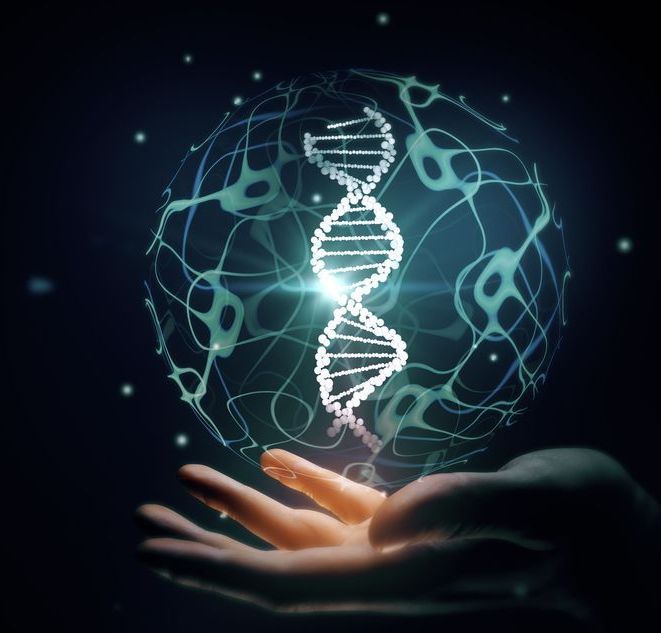Humanity is poised to take a huge leap forward, as a convergence of next-gen technologies combine to give us unprecedented power over our own biology. Here’s a roadmap to the key technologies and how it’s going to play out in the coming decades.



David Sinclair, professor of genetics at Harvard Medical School, discusses his new book “Lifespan”, which distills his cutting-edge research findings on the biological processes underpinning aging. Sinclair describes lifestyle hacks we can undertake now to combat aging, as well as future scientific breakthroughs that promise to slow down—and even reverse—the aging process.
Moderated by: Sam Phippen
Get the book: https://goo.gle/2LXCd2P

From the intricate patterns of pollen grains to the logarithmic spirals of nautilus shells, biology is full of complex patterns, shapes, and geometries. Many of these intricate structures play important roles in biological function, but can be difficult to create in a lab without state-of-the-art equipment or expensive and energy-consuming processes and materials.
A new study describes how spheres can be transformed into twisted spindles thanks to insights from 16th century navigational tools. Researchers show how polymers can contract into spiral structures, known as loxodromes, that have complex patterning ten times smaller than the width of a human hair. Published in Physical Review Letters, the research was conducted by University of Pennsylvania graduate student Helen Ansell, postdoc Daeseok Kim, and professors Randall Kamien and Eleni Katifori in the School of Arts and Sciences, in collaboration with Teresa Lopez-Leon of the École Supérieure de Physique et de Chimie Industrielles de la Ville de Paris (ESPCI).
Kim, who worked on this project at ESPCI before coming to Penn, was inspired by other studies showing that a mixture of polymer and liquid crystal took on a new shape when placed in a different solvent. It was a change that was also reversible and reproducible, with little to no energy required to cause the change in shape.


In the iconic frontispiece to Thomas Henry Huxley’s Evidence as to Man’s Place in Nature (1863), primate skeletons march across the page and, presumably, into the future: “Gibbon, Orang, Chimpanzee, Gorilla, Man.” Fresh evidence from anatomy and palaeontology had made humans’ place on the scala naturae scientifically irrefutable. We were unequivocally with the animals — albeit at the head of the line.
Biological advances have repeatedly changed who we think we are, writes Nathaniel Comfort, in the third essay of a series marking Nature’s anniversary on how the past 150 years have shaped science today. Biological advances have repeatedly changed who we think we are.

Researchers long wondered how the billions of independent neurons in the brain come together to reliably build a biological machine that easily beats the most advanced computers. All of those tiny interactions appear to be tied to something that guarantees an impressive computational capacity.
Over the past 20 years, evidence mounted in support of a theory that the brain tunes itself to a point where it is as excitable as it can be without tipping into disorder, similar to a phase transition. This criticality hypothesis asserts that the brain is poised on the fine line between quiescence and chaos. At exactly this line, information processing is maximized.
However, one of the key predictions of this theory—that criticality is truly a set point, and not a mere inevitability—had never been tested. Until now. New research from Washington University in St. Louis directly confirms this long-standing prediction in the brains of freely behaving animals.

EVANSTON, Ill. — A new Northwestern University study finds that despite human’s close genetic relationship to apes, the human gut microbiome is more similar to that of Old World monkeys like baboons than to that of apes like chimpanzees.
These results suggest that human ecology has had a stronger impact in shaping the human gut microbiome than genetic relationships. The results also suggest the human gut microbiome may have unique characteristics compared to other primates, including increased flexibility.
“Understanding what factors shaped the human gut microbiome over evolutionary time can help us understand how gut microbes may have influenced adaptation and evolution in our ancestors and how they interact with our biology and health today,” said Katherine Amato, lead author of the study and assistant professor of anthropology in the Weinberg College of Arts and Sciences at Northwestern.


China has broken new lunar ground, successfully growing cotton on the moon for the first time. The experiment was part of the Chang’e 4 project, in which China is exploring the far side of the moon with a lander. This is the same lander that recently discovered a mysterious gel-like substance on the moon’s surface.
The cotton plant was one of several organisms encased in a mini biosphere weighing just 2.6 kilograms (5.7 lbs) with a pressure of 1 atmosphere which was aboard the lander. The organisms experienced an environment largely similar to that on Earth, however, they did have to contend with both space radiation and microgravity.
In an interview with engineering magazine IEEE Spectrum, project leader for the experiment Xie Gengxin explained more about the challenges of growing plants in the restricted environment. “The weight of the Chang’e-4 probe demanded that the weight [of the experiment] can’t exceed three kilograms,” he said. That’s why it was important to select the biological samples in the experiment carefully.

Download the podcast via Apple Podcasts, Google Play or Spotify.
Sandra Rey, 29, was participating in a student design competition with the theme “biology” and got to watching videos on YouTube of bioluminescent sea creatures when she thought there must be a way to replicate that natural technology. Five years later, her startup, called Glowee, is creating brilliant luminescent art installations for hotels and public spaces.
While she admits, “We’ll never replace the lights in your kitchen,” she hopes to create enough light and enough beauty to play a role in the world’s lighting mix to help reduce reliance on electric lighting.